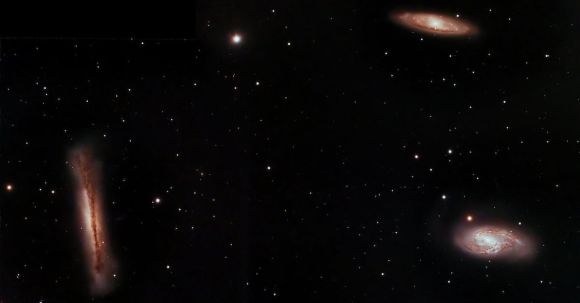The age of the universe has been a topic of fascination and exploration for centuries. From the ancient Greeks pondering the cosmos to modern-day scientists using advanced technology, the quest to determine the age of the universe has come a long way. In this article, we will delve into the methods that scientists use to estimate the age of the universe, shedding light on this intriguing and complex subject.
Cosmic Microwave Background Radiation
One of the most compelling pieces of evidence for the age of the universe is the cosmic microwave background radiation (CMB). This faint glow, discovered in 1965 by Arno Penzias and Robert Wilson, is the remnant of the Big Bang. By examining the properties of the CMB, scientists can glean important information about the age of the universe.
The Expansion of the Universe
The expansion of the universe is another key factor in estimating its age. The idea of an expanding universe was first proposed by the Belgian astronomer Georges Lemaître in the 1920s. The rate of this expansion is measured using a parameter called the Hubble constant, named after the American astronomer Edwin Hubble. By determining the current rate of expansion and extrapolating backwards, scientists can estimate the age of the universe.
Redshift and Hubble’s Law
Redshift is a phenomenon that occurs when light from a distant object is stretched as the universe expands, causing it to shift towards the red end of the spectrum. This redshift is directly related to the object’s distance from us. Hubble’s Law, formulated by Edwin Hubble in 1929, states that the velocity at which a galaxy is moving away from us is proportional to its distance. By measuring the redshift of galaxies and applying Hubble’s Law, scientists can calculate the age of the universe.
Stellar Evolution and Supernovae
Stellar evolution is another important tool in estimating the age of the universe. Stars go through a lifecycle, evolving from a protostar to a main sequence star, and eventually, depending on their mass, to a red giant, a white dwarf, or even a supernova. By studying the lifecycles of stars and the frequency of supernovae, scientists can determine the average age of stars in the universe and use this information to estimate the age of the universe.
Isotopic Dating
Isotopic dating is a method used to determine the age of rocks and minerals on Earth. By measuring the isotopic ratios of certain elements within these rocks, scientists can calculate their age. This technique can also be applied to meteorites, which are believed to have formed around the same time as the solar system. By dating meteorites and using them as a reference, scientists can estimate the age of the universe.
Conclusion: Piecing Together the Puzzle
Estimating the age of the universe is a complex puzzle that requires the integration of various pieces of evidence and scientific methods. Through the study of cosmic microwave background radiation, the expansion of the universe, redshift, stellar evolution, and isotopic dating, scientists have made significant strides in understanding the age of our vast universe.
While the exact age of the universe may still be a subject of ongoing research and debate, the methods discussed in this article provide valuable insights into this fundamental question. By continuing to refine these techniques and harnessing the power of new technologies, scientists are inching closer to unraveling the mysteries of our universe and gaining a deeper understanding of its origins and evolution.





